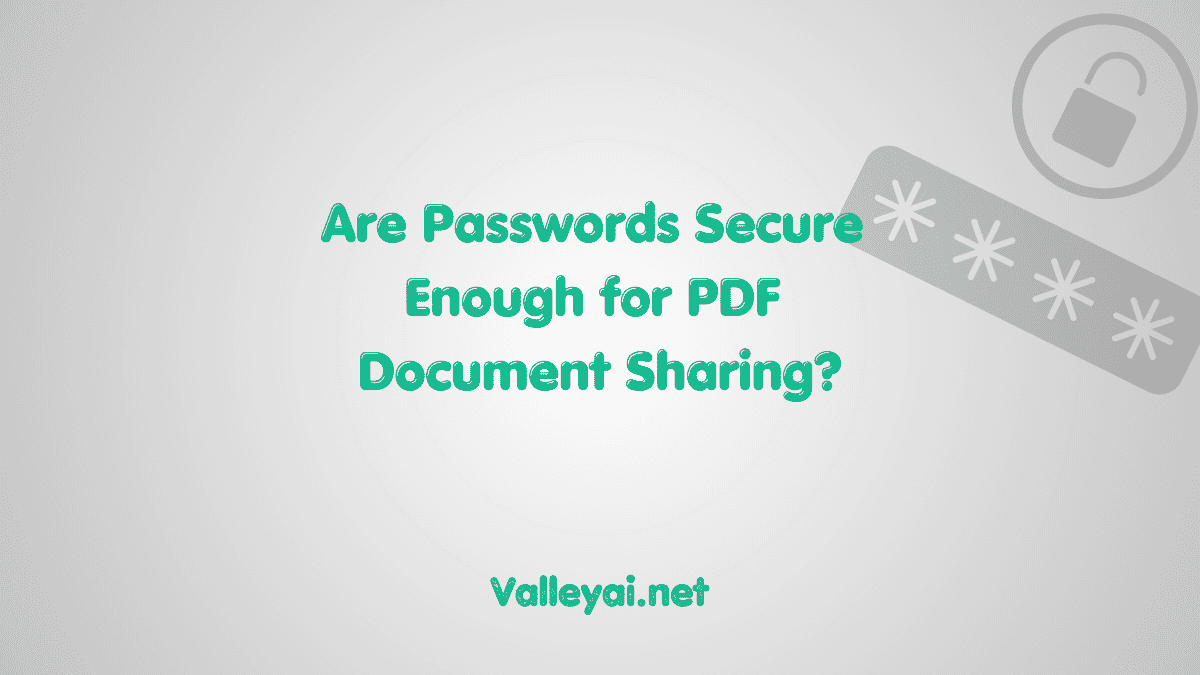Are Passwords Secure Enough for PDF Document Sharing? let’s explore their effectiveness. Students are always looking for ways to share notes and study materials with their classmates.
The Adobe PDF format is often used to create and share documents electronically, as it allows users to preserve the layout and formatting of the original document. This is also true for businesses selling course material such as study guides.
However, password protection and certificate encryption, which are meant to prevent unauthorized access and restrict how users can use PDF documents, are not always effective.
Password Protection: A False Sense of Security
It takes many hours organizing notes and creating a study guide in Adobe PDF format so it is only natural to look at PDF password protection when sharing it with a study group. You might think that password protecting a PDF document would be enough to prevent unauthorized access, especially if only sharing with trusted classmates.
However, it won’t be long before one of those classmates shares the password with a friend, who then shares it with other people. Before you know it, your study guide will be circulated among many students in your class, and you will have no control over who was accessing it.
You then realize the weakness of passwords – password protection is not enough to prevent
document sharing, as the password could be easily shared or guessed and then once known, simply removed.
Certificate Encryption: Limited Access and Usage Control
Certificate encryption, which is seen as a more secure alternative, does not prevent authorized users from saving or sharing a copy of the document. Therefore, both security measures are not effective in preventing document sharing or restricting how users could use study guides.
But if you cannot prevent document sharing, can you prevent printing and editing? Well while Adobe has permissions that you can enable to prevent these actions from occurring, they are simple for users to remove using free online password-removal tools. In other words, they are not worth adding, to begin with as they provide no additional security.
Exploring DRM as a More Secure Approach
A heightened level of security can be achieved by utilizing digital rights management (DRM) to govern the accessibility and utilization of PDF documents.
DRM allows the document owner to set permissions on the document, such as preventing users from copying, printing, or editing the document and preventing watermarks from being removed.
While DRM can often be seen to be restrictive to the end user, it does prevent sharing especially if you choose a PDF DRM solution that does not use passwords. Using PDF DRM will give you complete control over who can access and use your documents, so you can be confident that they cannot be shared with unauthorized users.
DRM Limitations and Considerations
However, it is worth noting that DRM and watermarking are not perfect solutions either. DRM can be cumbersome and restrictive for users, as it limits their ability to access and use the document in certain ways.
On the contrary, watermarking can offer users more flexibility, but it might not offer an equivalent level of security compared to DRM. Watermarks can be easily removed or altered, and they do not prevent users from sharing or distributing the document.
A dynamic watermark can help here – by displaying the user’s name across the document when it is printed so they are less likely to share it.
Hence, it is crucial for businesses and other users to thoroughly evaluate their security requirements and objectives, and select appropriate security measures in accordance with their unique needs and available resources.
Legal Implications and Responsibilities
In addition to security concerns, users should also be aware of the legal implications of sharing or distributing PDF documents. Some documents may be protected by copyright or other intellectual property laws, which can carry significant legal consequences for unauthorized sharing or distribution.
Therefore, it is important for users to be aware of the legal rights and responsibilities associated with sharing or distributing PDF documents, and seeking legal advice if necessary.
Final Words
Overall, password protection and certificate encryption are not always effective in preventing document sharing or restricting how users can use PDF documents. These security measures can be easily bypassed or shared, and they do not always effectively meet the needs of all users.
Therefore, it is important for businesses and users to consider alternative security measures such as DRM and watermarking when dealing with sensitive or valuable documents in Adobe PDF format.
By understanding the limitations of these security measures, and by choosing the right security measures based on their specific needs and goals, businesses and other users can effectively prevent document sharing and restrict how PDF documents are used.
Read also: How to install a VPN on a computer
- Understanding the Landscape of Cloud Vulnerability Management - March 25, 2024
- Quality Assurance Strategies for Startups: Ensuring Software Reliability - March 5, 2024
- Working of NLP to Improve Copywriting in AI Paraphrasing Tool - February 28, 2024

